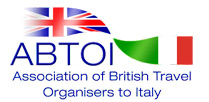It was great to see David Ferrer bow out of the game after a few great wins and then losing to Nadal but with his competitive spirit entirely intact! One of the games greatest warriors and a true sportsman.
Uncle Toni certainly thinks so as he named Djokovic, Thiem & Federer as Nadal’s biggest threats for the title.
- Federer will be playing his first clay event since 2016 when he steps onto the court in Madrid.
- Federer has been making his readjustment to the clay with his coaches Severin Luthi, Ivan Ljubicic & long-time fitness trainer Pierre Paganini.
- Federer’s decision not to play on the clay in the past was in part due to an effort to protect his knee and back in his advancing years.
Paganini is tasked with getting Federer in optimum physical condition for clay and the fitness guru says Federer should have no injury worries on the surface.
He told Swiss publication Blick “He was rarely injured in the course of his career and in principle no more often on a certain surface. It is important when changing surface to quickly adjust to something new in your head, so you have the right reflexes in the implementation"
Luckily, that's one of Roger's most underrated qualities.
If Paganini is right how good would it be to see a Nadal/Federer final??
And what can we learn from him?
Apart from the obvious physical qualities and great desire Uncle Toni explains the reasons why Nadal has been so successful.
Uncle Toni said: “He manages to cope with adversity. It is in his head, and it is the same gift that Djokovic and Federer have. Turning negative situations upside down [and] getting out of adversity. [It is] a gift that young people do not have. If all goes well, they win, they are happy but they are not able to win playing badly.
It is not normal to still see 37 and 33-year-old players winning the most important tournaments and this depends on their tendency to often reach an unjustified level of frustration.
They want to be told that they are good, that everything is fine, they don't accept criticism”
In my view this applies to the vast majority of players who compete at all levels throughout the world. Taking knocks on the chin, recovering and finding a way even on the poorer days is fundamental for any tennis competitor. Moaning all the time serves no purpose if you can’t use that negative energy and do something positive with it!
When exactly should you move for a doubles interception? As per usual “it all depends” but what does it depend upon? There are a variety of factors and their combinations:
1/ How fast are you?
2/ How good is your partner’s serve?
Possible situations/solutions
1. So….assuming you are reasonably quick and your partner’s serve is also reasonably rapid/precise then the ideal time to move is when your opponent has initiated their forward swing. If you move before the forward swing then they will have a better chance of passing you down the line.
2. If you are quick but your partner’s serve is slow it could still work but much more chance of the returner seeing you and will have time to pass you just by using their wrist off a slow ball! So you could at least fake going or go as late as possible with your good court speed?
3. If your speed has gone and your partner’s serve is not the quickest then you are in trouble and unlikely to be all that successful on interceptions! However, if the returner is particularly weak on one side then it may still be possible but you may need to move before the returner has started their forward swing in order to get there! Or call a taxi?
4. The good news regardless of your physical speed or the quality of your partner’s serve is that you can still be annoying at the net by looking like you might move or faking or going early on the first point etc. There are so many possibilities for all levels of play without having to call for a taxi!


 RSS Feed
RSS Feed
